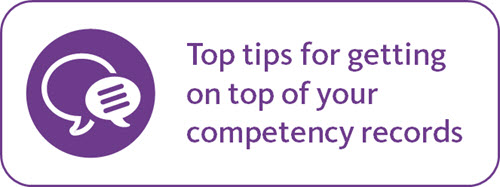Competency records a critical component of QHSE management systems
If there is one aspect of QHSE management systems that causes a lot of problems it’s competency records.
To mess up competency records – to not keep a thorough, up-to-date log of training, qualifications and experience – is to invite a level of wince-inducing risk.
First, there’s the risk of looking like a not-in-control-of-my-job prat in front of the external auditor. Then there’s the risk of not being able to quickly and accurately identify gaps in your organisation’s human resources capacity – something which the CEO and senior managers obviously need to know.
There’s also the risk of not being able to produce up-to-date documentation for regulators.
And finally, the worst risk of all - the kind that creates waking nightmares – that an employee was doing a task they were neither trained nor experienced enough to do, and someone got seriously hurt (or worse).

Competency records – 4 top tips
Competency records clearly aren’t something to be messed with – there’s just too much at stake. But it’s not easy given how much detail needs to be constantly controlled and updated – especially if your business runs across multiple sites. At times it seems as though it would be easier to itemise snowflakes!
Of course a good software-based system helps significantly but if you're not fortunate enough to have such a solution, there's still some things you can do.
Here are my 4 top tips for getting on top of your competency records:
- Create a solid plan – one that you can stick to like honey on toast. This is absolutely critical if you’re using a paper-based system because you’re already on a hiding to nothing. No one ever wants to face a CEO, external auditor, investigator or a colleague’s family member with a shoddy set of incomplete paperwork.
- Create a competency register. If you must use a paper-based system then you should create a register that will summarise the competencies of all staff. This could be arranged either by company, branch or department. My definition of competency is that it’s made up of training, qualifications and experience. From this top level you then refer to lower level documents for more detail. And here’s the kicker – you should update this register every week.
- Have a consistent system. Apply rules consistently across the whole organisation. Updating the register is going to be made infinitely harder if you don’t.
- Audit monthly. Yes, monthly. Before you reel back in horror, take a moment to picture again standing in front of the CEO/Investigator/family member. This audit pattern won’t have to last forever – once you have the records under control and everyone is in the swing of things, you can move out the frequency of audit, eventually reaching a maximum of 6 months.
.png?width=200&height=51&name=image%20(2).png)



